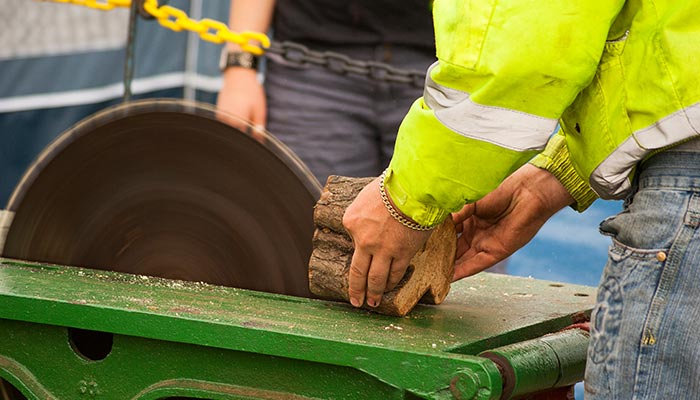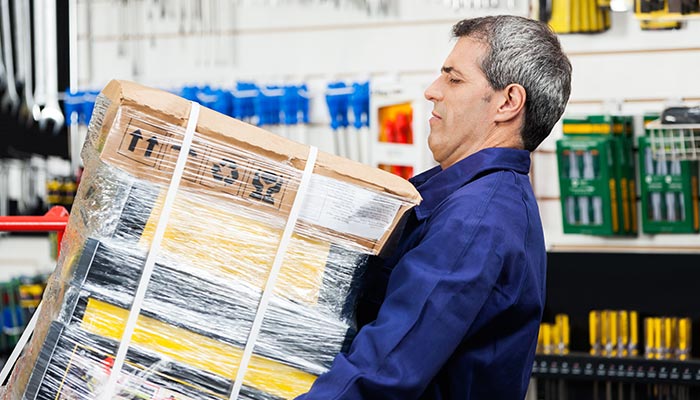Employers and workers need to understand the serious health risks associated with unsafe work practices. The 2023 Key Work Health and Safety Statistics from Australia report that the leading causes of workplace injuries include traumatic injuries to joints, ligaments, muscles, or tendons (36.7%), wounds and lacerations (17.6%), and musculoskeletal diseases (12.7%).
Overexertion, repetitive motions, wrong machine handling, or sudden impacts mainly cause workplace incidents and injuries. These are unsafe work practices that can be easily avoided. This guide will discuss the ten most common unsafe work practices and how to prevent workplace accidents and injuries.
What are Unsafe Work Practices?
Unsafe work practices refer to any behaviour or action that puts employees at risk of injuries, illnesses, or fatalities. These issues may arise from negligence, inadequate training, lack of knowledge, or carelessness. Addressing unsafe work practices and taking the necessary steps to prevent them is essential.
#1 Not Wearing Proper Personal Protective Equipment (PPE)
Personal protective equipment (PPE) protects workers from chemical spills, flying objects, loud noises, and electrical shocks. Yet many still neglect to use the appropriate PPE or use it incorrectly. When employees don't have proper equipment or follow PPE guidelines, they risk exposure to harmful substances and serious injuries. Employers must provide appropriate PPE and train employees to use it correctly.
PPE is commonly categorised into:
- Head Protection: Hard hats, helmets, hairnets
- Face and Eye Protection: Safety glasses, goggles, and face shields
- Hand and Arm Protection: Gloves, arm shields, jackets
- Foot and Leg Protection: Safety boots, shoes, and toe caps
- Hearing Protection: Earplugs and earmuffs.
- Respiratory Protection: Dust masks or respirators
- Skin Protection: Aprons, coveralls, and high-visibility clothing

Preventive Measures
To avoid accidents due to improper PPE use, employers should:
- Perform a risk assessment to determine the PPE required for each task
- Ensure employees understand why they need PPE and how to use it correctly
- Offer training regarding when and how to wear PPE
#2 Failing to Follow Established Safety Procedures
Safety procedures include:
- Lockout/tagout (LOTO) procedures for isolating energy sources
- Confined space entry procedures
- Hazardous materials handling and storage protocols
- Emergency response procedures
- Fall protection measures
- Fire safety protocols.
Safety procedures outline step-by-step instructions for carrying out tasks safely. However, employees may be tempted to take shortcuts or skip steps in the interest of time or convenience. For instance, a worker may not lockout equipment before performing maintenance, leading to electrocution or amputations.
Preventive Measures
Employers should:
- Develop clear and easy-to-follow safety procedures.
- Provide regular training on the importance of following established procedures.
- Hold employees accountable for deviations from safety protocols.
#3 Working in an Unaware Area
Unaware areas refer to any place unaware of potential safety hazards. Examples of these jobs include excavation, demolition, and electrical work. For instance, an excavation worker may not be mindful of the presence of underground utilities and inadvertently hit an electrical wire or gas line.
Some more jobs include:
- Welding
- Mining
- Agriculture
- Roofing
Preventive Measures
To mitigate the risks involved with these jobs, employers must:
- Conduct a thorough risk assessment and analyse the work environment for potential hazards.
- Provide workers with adequate training and education on identifying and avoiding hazards.
- Use appropriate safety equipment, such as lockout/tagout systems, barricades, and warning signs.
#4 Not Using Proper Equipment or Tools
Using incorrect or defective tools can lead to severe injuries and accidents. For example, a hammer with a loose head can fly off and strike someone. Another instance involves using a ladder that is too short, leading the worker to lose balance and fall. Employers must provide adequate training on tool usage and regularly inspect equipment for faults or damages.
Here are some activities that workers might take shortcuts on:
- Lifting heavy objects
- Removing safety guards from machinery
- Failure to lockout equipment before maintenance or repair
- Mishandling of chemicals and toxic substances like solvents, pesticides, and cleaning agents
- Ignoring warning signs or labels on equipment
Preventive Measures
Here's a checklist or guide on mitigating risks associated with improper tool usage:
- Regularly inspect tools and equipment for defects or damage
- Offer instruction in the correct use of tools and equipment.
- Ensure employees understand that safety guards should never be removed from machinery
- Use engineering controls like machine guards, lockout/tagout systems, and ventilation systems where appropriate
- Provide PPE for workers handling chemicals or working in hazardous environments
#5 Handling Hazardous Materials Improperly
In sectors like construction, agriculture, and manufacturing, workers encounter hazardous substances daily. These can include asbestos, lead, silica dust, and flammable chemicals. Here are common improper practices that can lead to fatal accidents:
- Lack of Training: Employees may lack proper training in handling hazardous substances safely.
- Insufficient Labelling: Containers without proper labels can lead to the misuse of substances.
- Improper Storage: Not following recommended storage guidelines, such as temperature control and separation of incompatible materials.
- Inadequate Personal Protective Equipment (PPE): Failing to provide or use appropriate PPE like gloves, masks, and eye protection.
- Ignoring Safety Data Sheets (SDS): Overlooking the information about safe handling, storage, and disposal provided in SDS.
Preventive Measures
Employers can reduce the risks related to managing hazardous materials through the utilisation of:
- Chemical Management Plans
- Safe Work Method Statements (SWMS)
- Appropriate PPE
- Regular training
- Safety data sheets (SDS)
#6 Working in Unsafe Postures or Lifting Incorrectly
As mentioned in the introduction, overexertion and repetitive motions are common causes of workplace injuries. The risks of Musculoskeletal Disorders (MSDs) increase when workers take shortcuts, work in awkward positions or use improper lifting techniques. Here are industries that are at high risk of MSDs:
- Construction: Bending, crawling, and lifting heavy objects
- Office work: Prolonged sitting, using poorly designed furniture or equipment
- Healthcare: Transferring and lifting patients
- Agriculture: Prolonged standing, lifting heavy loads
- Manufacturing: Repetitive movements, working in awkward postures like overhead reaching
Common MSDs include:
- Carpal tunnel syndrome
- Back and neck pain
- Tendonitis
- Herniated Discs

Preventive Measures
To mitigate the hazards linked to working in unsafe postures or lifting improperly, it is essential to:
- Identify high-risk tasks like lifting, bending or repetitive movements.
- Develop ergonomic workstations and equipment.
- Educate workers on correct lifting techniques through safety training and job rotation.
- Encourage stretching exercises and breaks to reduce muscle fatigue.
- Use assistive devices like carts, hoists, or forklifts for heavy lifting tasks.
- Use safe operating procedures (SOP)
#7 Operating Machinery Without Proper Training
Operating high-risk machinery such as forklifts, cranes, and excavators with poor training can result in serious accidents. The risks include:
- Collisions and tipovers
- Entanglement in moving parts
- Being struck by falling objects
- Equipment damage
- Productivity loss
- Legal and Financial Consequences
Work activities that often require the use of heavy machinery are:
- Construction projects
- Warehousing and logistics
- Manufacturing and production lines
- Agriculture and farming operations
Preventive Measures
To avoid these unsafe work practices, it is essential to provide proper training for all employees who will operate heavy machinery. This training should cover the following areas:
- Identification and understanding of equipment components and controls
- Safe operating procedures, including start-up, shut-down, and maintenance tasks
- Load capacities and safe weight distribution
- Hazard identification and risk control measures
- Emergency procedures in case of accidents or malfunctions
#8 Tampering with Safety Devices
Tampering means changing something that has already been decided or influencing it corruptly. In workplace health and safety, tampering with safety devices such as emergency stop buttons, fire alarms, and sprinkler systems can have severe consequences. This includes:
- Disabling safety features: This risks workers if an emergency or equipment malfunctions.
- Ignoring safety signs and warnings: Tampering with warning signage or bypassing alerts on machinery can lead to accidents.
- Damaging equipment: Intentionally damaging safety devices can cause equipment failure and increase worker risks.
Preventive Measures
To prevent tampering with safety devices, employers must:
- Conduct regular safety inspections and maintenance of all safety equipment.
- Use checklist and tag systems to track safety device functionality.
- Install tamper-proof devices and alarms.
- Educate workers on the importance of safety devices and the consequences of tampering with them.
- Encourage reporting of any signs or evidence of tampering.
#9 Engaging in Horseplay
Horseplay refers to any rough and rowdy behaviour unrelated to work. While it may seem harmless, horseplay can lead to severe workplace accidents and injuries. For instance, a worker playfully pushing another worker near a ledge or operating equipment while goofing around can result in falls, amputations, or even death. Employers should have strict policies against horseplay and enforce disciplinary actions for those who engage in it.
Preventive Measures
To prevent workers from engaging in horseplay, employers can:
- Establish and communicate clear policies prohibiting horseplay in the workplace.
- Create a culture of accountability and reporting unsafe behaviour
- Conduct regular safety training sessions to teach workers about the dangers of horseplay and safety practices.
- Ensure supervisors monitor work areas and enforce safety policies consistently.
#10 Failing to Report Unsafe Conditions or Near Misses
Reporting unsafe conditions and near misses helps identify potential hazards before they lead to severe accidents. However, many workers fail to report these incidents because they do not recognise them or fear retaliation. Unreported unsafe conditions can result in workplace injuries and fatalities.
Preventive Measures
To encourage reporting of unsafe conditions and near misses, employers can:
- Encourage a reporting culture
- Provide options for anonymous reporting
- Acknowledge and reward employees who report unsafe conditions or near misses
- Use a nonconformance or incident report form to document and investigate workplace incidents.
Be Proactive with SafetyDocs
Workplace safety requires proactive measures to prevent accidents and injuries. You can't be proactive without the right tools. SafetyDocs by SafetyCulture is Australia's most trusted provider of safety solutions to help you manage safety compliance and improve workplace safety.
To keep your workforce safe and compliant, you can access a library of ready-made templates, including safety training materials, inspection checklists, and workplace incident reports. Start browsing from Safety Management Systems to industry packages to find the right safety solution for your organisation.
Equip your workers with the expertise and resources to prevent unsafe work practices. Explore SafetyDocs' comprehensive range of occupational safety products and services.
Our team of experts is dedicated to providing accurate and informative content. Craig Cruickshank, our senior HSEQ advisor at SafetyDocs by SafetyCulture has reviewed this blog post to ensure the highest level of quality.
Learn more about Craig's work on LinkedIn for more industry insights.
Available for instant download and supplied in fully editable MS Word format for use in your business.
Please note that the above information is provided as a comment only and should not be relied on as professional, legal or financial advice.
Share This Article
